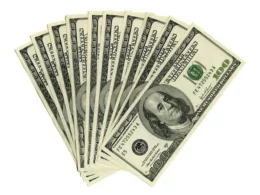Living on a tight budget can be tough, especially when you only have $200 to last for two weeks. The big question is: can it be done? The answer is yes—but it requires discipline, smart planning, and a willingness to cut back on non-essentials. This guide will walk you through strategies to make your money stretch while ensuring your basic needs are met.
This tight budget means making tough decisions about what truly matters. You’ll need to distinguish between wants and needs, focusing your limited funds on housing, food, and transportation. Payday loans with their high interest rates can seem tempting when stretching $200, but they often create longer-term financial problems and should be avoided whenever possible.
Key Takeaways
- A detailed budget prioritizing essential expenses like food, transportation, and utilities is crucial when stretching $200 over two weeks.
- Cost-cutting strategies such as meal planning, using public transportation, and eliminating non-essential spending can significantly extend your limited funds.
- Building emergency savings and developing additional income streams creates better financial resilience for future tight budget situations.
Assess Your Financial Situation

Before you create a budget, it’s crucial to take a hard look at your financial standing. Understanding your income, expenses, and potential areas for savings will set you up for success.
Calculate Your Income
Start by determining how much money you have available. If you’re relying solely on the $200, plan accordingly. However, if you have other income sources, consider incorporating them into your budget.
List Your Expenses
Categorize your expenses into essential and non-essential:
- Essentials: Rent, utilities, food, transportation
- Non-Essentials: Entertainment, dining out, subscription services

Identify Areas to Cut Costs
Evaluate where you can reduce spending. For example:
- Swap expensive grocery items for cheaper alternatives.
- Reduce electricity and water consumption to lower utility bills.
- Cut back on streaming services, coffee shop visits, and impulse purchases.
Setting a Realistic Budget
A well-planned budget is key to making your $200 last for two weeks.
Prioritize Your Needs
Allocate your money wisely:
- Groceries: $60–$80
- Utilities: $20–$40
- Transportation: $20–$40
- Other Essentials: $20–$40
- Emergency Fund or Miscellaneous: Whatever remains
Use the Envelope Method
Divide your money into envelopes labeled with different spending categories. This helps prevent overspending.
Track Every Dollar
Use a simple notebook or a budgeting app to log expenses and ensure you stay within your limits.
Smart Strategies to Stretch $200
If you want your money to last, you’ll need to be creative and resourceful. Here are some key strategies:
1. Meal Planning and Smart Grocery Shopping
- Buy in bulk where possible.
- Choose affordable, nutritious staples like rice, beans, pasta, and frozen vegetables.
- Avoid pre-packaged and processed foods—they tend to be more expensive.
- Look for store-brand alternatives instead of name-brand products.
2. Reduce Transportation Costs
- Walk or bike if your destination is close.
- Use public transportation instead of rideshare services.
- Carpool with friends or colleagues when possible.
3. Save on Utilities
- Unplug electronics when not in use.
- Take shorter showers to lower water bills.
- Use energy-efficient light bulbs to reduce electricity costs.
4. Find Free Entertainment
- Visit local parks, libraries, and community centers.
- Attend free events and activities in your area.
- Host a movie or game night at home instead of going out.
5. Avoid Impulse Purchases
- Stick to a shopping list to prevent unnecessary spending.
- Use cash instead of credit cards to limit expenditures.
What If You Have More Money?
If you have a little more than $200, your strategy can adjust slightly.
How to Make $300 Last Two Weeks
- Allocate extra funds to healthier food choices.
- Save a portion for an emergency fund.
- Allow a small amount for occasional treats or entertainment.
How to Make $400 Last Two Weeks
- Pay down outstanding bills or debts.
- Consider investing a small portion in savings.
- Purchase higher-quality items that last longer, reducing future expenses,
Cutting Non-Essential Expenses
When money is tight, luxury spending must take a backseat. Here’s how you can eliminate unnecessary expenses:
Say No to Daily Coffee Runs
Brewing coffee at home can save you $3–$5 per day, adding up to significant savings over two weeks.
Cancel Unnecessary Subscriptions
Streaming services, meal kit deliveries, and subscription boxes can eat into your budget. Pause or cancel them temporarily.
Limit Alcohol and Dining Out
Restaurants and bars can drain your funds quickly. Opt for home-cooked meals and enjoy drinks at home.
Use Coupons and Loyalty Programs
Many stores offer discounts through digital coupons and rewards programs. Take advantage of these to lower costs.
Emergency Backup Options
Sometimes, even with careful planning, unexpected expenses arise. Here are some backup strategies:
Consider a Side Gig
- Sell unused items on platforms like eBay or Facebook Marketplace.
- Offer small services like babysitting, dog walking, or tutoring.
- Take on short-term freelance work online.
Use Loan Apps Wisely
Short-term loans should be a last resort. If you must use one, ensure you understand the terms and interest rates to avoid long-term debt.
Seek Community Resources
Look into local food banks, free meal programs, and assistance programs if you need additional support.









